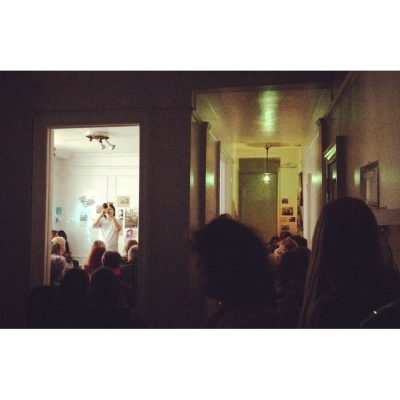We were clearing the dishes after dinner when I found myself telling my 15 year old son the story of La Llorona. I’d been re-reading Clarissa Pinkola Estés’s collection of folktales and myths, Women who Run with the Wolves (1992). It’s a work that reveals itself over time and one of a handful of books I return to whenever I find myself at one of life’s crossroads. I’d just read ‘La Llorona’ and left it open, face down at the edge of our table while we ate. I was reeling. It was not the first time I’d encountered this tale, yet I did not remember it from earlier readings. Perhaps I was not ready. I scraped broccoli stems off a plate into the bin. I started, ‘Once upon a time, there was a poor Brown woman in Guatemala and she fell in love with a wealthy hidalgo,’
‘What’s a hidalgo? And where is this taking place?’ He handed me another dirty plate.
‘It’s a Spanish lord in colonial times. And the story comes from a small Latin country in central America, not far from Haiti.’
I am from Haiti.
‘So,’ I continued, ‘They were happy because the lord thought this poor woman was very beautiful and he took her into his hacienda – which is Spanish for villa – surrounded by bougainvillea and the sweet smell of almonds from the fragrant virgin’s bower that climbed the old stone walls. They made two babies together and loved and cared for them. One sunny morning she smiled at him and he didn’t smile back. He told her without looking at her that he was leaving her and taking the children with him. He had found a woman he could marry, European and wealthy. Our lady looked around herself and saw that everything good had been taken away from her. In despair, she took their two small boys to the river and she tied a rock to her ankle. Hugging them tight, she jumped in where the water was deep. They all drowned. She came back though,’
‘What?’ He stopped loading the dishwasher and looked at me with a glass in each hand.
‘Mmm,’ I nodded, pleased to have his attention. ‘St Peter sent her back to earth as La Llorona, the weeping woman, condemned for eternity to feed the river with her tears while combing its depths with her reed-like fingers for the souls of her lost little boys.’
He thought for a moment and said, ‘How lucky we are, you didn’t do like La Llorona with me.’
His words shocked me. I really didn’t expect this reaction. How could he even imagine that I might have killed him – us both? Yet children know their parents, no matter how hard we try to fool them. Somehow he was able to tell, sitting in his middle-class life in London, how relevant this tale was to me. There is a Haitian saying, about not scratching the spot that does not itch. La Llorona took hold of me like a rash and my son, who is no fool, understood that. To be fair, I was not alone: the sad tale of the weeping mestiza has proved enduring. There are songs about La Llorona by famous Latin artists such as Ángela Aguilar and Chavela Vargas. There are La Llorona films, the latest, a horror take on the tale set in Guatemala, has grossed over $120 million since its release in 2019.
This is because La Llorona is a crucible for many colonial traumas. Its logic follows a special brand of Latin American fatalism. What’s the point, it confirms once again. No matter how hard we try, the deck is tilted, the hand rotten, the rich white man, the hidalgo, always wins at the end. Filicide sounds like a crime of madness but it is born of despair and while this folktale has much in common with Euripides’s Medea (431 BC) – an abandoned lover who also kills her children – La Llorona’s humanity is so reduced, she doesn’t even have a name. Medea left her kingdom to marry Jason. When he betrays her, she finds herself alone in a foreign land. The poor Black or Brown woman in the former colony has always been in exile. She finds herself doubly abandoned, by her lover and by her society once the validation of the hidalgo is gone.
A French anthropologist named Claude Meillassoux, who worked extensively in Africa, published a book called The Anthropology of Slavery: The Womb of Iron and Gold (1986). In it he describes a central tenet of Atlantic slavery and probably the most damaging legacy for all of us descendants of African slaves: The inability for the slave to create and protect a family. When adults are prohibited from hoping for themselves, they place their hopes on their children. Toni Morrison’s classic novel Beloved (1987) goes back to that time, in the antebellum United States, where another filicide takes place. A mother and runaway slave called Sethe is haunted by the child she loved enough to kill. Cornered by ‘the four horsemen’, slave catchers from the plantation, Sethe decides to save her young children from slavery, ‘to put my babies where they would be safe.’ She only has time to murder her firstborn daughter before she is captured. Based on a true story, that of a woman called Margaret Garner who escaped from a plantation in the 1850s, Beloved explores what happens when adults cannot hope for themselves nor their children.
So far so clear. But how about the grey areas that developed over the years, especially in the colonies further south, where less puritanical slave owners fathered babies with their African slaves, and unlike in the North, freed, even adopted some of those children, going so far as to send them to the metropole to be educated? Haitian historian Jean Fouchard in his Histoire D’Haiti (1990) explained why the Haitian revolution was different from other slave rebellions: ‘The French coloniser dug his grave with his penis.’ The mixed-race population was substantial in St Domingue when the French Revolution of 1789 erupted. Officially, there were twenty thousand ‘mulatto’ second-class citizens, living and working in the port cities, who heard about the French Revolution and decided to fight for their rights. The consensus today is that the number of mixed race affranchis was probably double that number. That would explain the creation of an official lobby group in Paris during the early years of the French Revolution to fight for the ‘mulatto rights’ in the Assembly. Creole officials would have massaged the census in order not to alarm the authorities in Paris, especially when the number of ‘Free People of Colour’ came to outnumber the whites. Reviled as traitors to both their parents, the ‘mulatto’ population of the time, the ‘mulatto’ woman in particular, came to play an essential role in the struggle for independence and the creation of the Haitian state. She was both lover and spy, and like women in war everywhere, learned to use her body and sex to protect those she loved or to advance the cause of liberty. Stories like those of Madame Pajeot, an educated free woman who ran the rectory in Petite-Riviere de l’Artibonite in 1802 and how she managed to save the founder of the Haitian state, Jean-Jacques Dessalines from certain arrest and death abound.
The Europeans knew how easily their narrative of racial hierarchy could be undermined. One of the last things Napoleon’s army did before fleeing Haiti, in spite of their defeats and death toll, was to arrest and send back to France all the white women found to have had relations with Black or Brown men. There was a special ship assigned to bring these women back to France in spite of the fact that the admiralty didn’t have enough transport to evacuate the defeated troops and left many of them at the mercy of the British to save them from the conquering Haitians. It was imperative if the Atlantic slave system was to continue in spite of Haiti in the Americas that the equivalence of the white race and power appeared divine. The voluntary coupling of white women with now free and powerful Black men would have dispelled the perceived hierarchy of the races. If inter-racial intercourse happened, it had to be the other way around, violently, with the hidalgo on top.
Over two hundred years later, my son who was born and raised in London can somehow sense the traumas from that time. He identified with La Llorona’s story because he must have seen the shadow of her ghost pass over me. I grew up listening to softer variations of the tale, the ones without the filicide but in which women like me needed to find a man with power to exist. Every Saturday, we’d all go have lunch at my grandmother’s in Port-au-Prince. I should say my grandparents but my grandmother was a matriarch and it really was her show. She worked and earned more than my grandfather, she ran the house and she planned the weekly family gathering down to the overcooked roast beef, white rice and silky kidney bean sauce pwa. The legacy of slavery runs deep in our culture. Both men and women find it hard to believe in their ability to own their world. I remember how strange it was for me, as a student in the United States, to see fellow students take themselves seriously. It wasn’t just their studies or their arguments, it was their feelings too. I had not learned that. Yet Haitian women are extraordinary by any measure. Like their forebears in the war of independence, they will fight with everything they have to protect their loved ones. They are resourceful, they run businesses, they console and they cook. They rise from their ashes again and again. They work hard but they’ll work hardest for a man. Just like the entrepreneurial mother in Haitian director Gessica Geneus’s celebrated film Freda (2021), they dream of a prince charming for their daughters. Freda, a university student in Port-au-Prince, watches with increasing incredulity her mother, Janette, herself a hard-working small shop owner, go to extraordinary lengths to marry her lighter-skinned sister Esther to a rich politician, while casting doubts on Freda’s dream of a degree. My young self suspected my hair was too kinky and my parents not prosperous enough to make me a contender for a ‘good’ marriage. In the first Black republic of the Americas, the dream of whiteness had come back with a vengeance. Not literally whiteness but Napoleon’s version of it, reminiscent of the colony, when white meant not just power and money but happiness. Since there are few caucasian people in Haiti, this ideal survived and even grew with time, unchallenged by the sight of sad or miserable white people. I declared I wanted neither marriage nor children but I couldn’t help sneaking to my grandparents’ bedroom at some point during those long Saturday lunches to look through my grand-mother’s collection of Mills & Boon romance novels. She called them her ‘sleeping pills’, because they were so predictable and boring. Yet they gave me great pleasure. It was lovely to sit in the dark coolness of my grandparent’s bedroom with their heavy mahogany furniture and the whiff of the blue antiseptic solution my grandfather kept his dentures in. The louvers were flipped shut to keep the heat out but the dust from the street found its way in anyway, in swirls inside thin rays of sunshine. I’d sit on the old chair in front of my grandmother’s dressing table and dream.
I earned a scholarship to study abroad. I became a banker. And then I married a tall and blond European businessman and history caught up with me. I disappeared. Bernardine Evaristo in her novel Girl, Woman, Other (2019) describes the sense of belonging a young Black woman first feels upon marrying into the white middle-classes; Carole, a first-generation Oxbridge graduate felt with her first white boyfriend Marcus ‘more socially acceptable than she could ever achieve on her own.’ Evaristo’s character breaks her Nigerian mother, Bummi’s heart when she decides to marry Freddy, an upper-class English man. That was not what Bummi had in mind when she accepted to move her family to the UK. She wanted her daughter to prosper without endangering her heritage. Evaristo focuses on the loss and alienation the mother feels and the daughter will discover. Freddy on the other hand is made of teflon. Less because he is white but because he is privileged. No amount of rubbing with Nigerian relatives or digesting of Nigerian food will dilute his entitlement and he knows it. Had this scene taken place at the home of a poor Black mother in Haiti the reaction would likely have been different. Considerations such as ‘improving the race’ would have taken precedence. I went to a Catholic girls’ school in Port-au-Prince, and in my year, there was only one white girl in my class. She was a redhead but she played in the sun baked playground as ferociously as all of us. Her fair skin became covered in freckles. She was thought of as exotic but not attractive. The rest of us all fit on the mixed-blood colour spectrum, from dark to olive. The girls considered the prettiest had the ‘best of both’, thick curly but not kinky hair and the body, and bounda of an Afemai or Edo princess. The ‘mulatto’ woman is identified even in Vaudou religion as the ideal of sexual desire. Erzuli Freda – re-created as the mixed-race beauty Janie in Zora Neale Hurston’s novel, Their Eyes were Watching God (1937) – is the goddess of love and sex, she has long flowing hair and brown skin and cries after every sexual encounter because she is barren and can never be loved enough. Erzuli Dantor, the goddess of motherhood is broad backed… and Black.
Perhaps this is what drove La Llorona to filicide. The suspicion that it was her shift from lover to mother that drove her white man away. Seen from the hidalgo’s eyes, she would have lost her beauty, in other words her value, to the responsibilities and toil of motherhood. She would have re-become invisible, like so many of the poor peasant women carrying babies on their backs, baskets of vegetables or firewood on their heads, a pipe or cigar hanging from their lips.
The dream of whiteness is fed with the trauma of Meillassoux’s ‘no family’ condition of the Atlantic slave. If one cannot procreate to found a family, one will breed to escape. In a new world ravaged, destroyed and re-created by and for Europeans, even a bit of whiteness goes a long way.
When my relationship ended, I was not just heartbroken, I was annihilated. I couldn’t shake the impression that, like La Llorona, everything ‘good’ had been taken away from me. For years I was tormented by an irrational fear that a vengeful deity or an angry universe would indeed plunge my children into a ravine or a glacial river to punish me for daring to survive and hope, first as a mother, then as a woman. Like Sethe in Morrison’s Beloved, it took a change of perspective to finally achieve a love of self, ‘your own best thing’.
I finally figured out how to respond to my son. I admitted that we were lucky indeed. ‘I dared to imagine a different ending. One in which you and I, and not the hidalgo, are at the centre of the world.’




